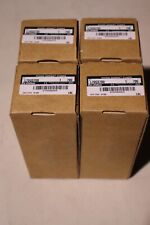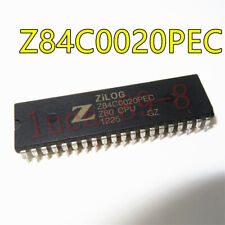Chapter 3: Inductor
Feb 5th 2001 , Naveen P N
Let me be very brief here. The main purpose of this tutorial is to explain what an inductor is and how it behaves in an electronic circuit.
The definition of inductance goes like this:
“Inductance is the ability of a coil to establish (or induce) a voltage within itself to oppose changes in current through its windings”.
That means when varying current flows through a coil, a voltage is induced within the coil in a direction so as to oppose the change of current through it.
The circuit symbol of an inductor is:
![]()
and like a resistor, it can be connected either way in a circuit, with the exception of mutually coupled coils that have to be connected in a particular way.
The unit of inductance:
The unit of inductance is ‘henry’ denoted by H. Usually, in electronics smaller values of H are used like mH (millihenry).
Applications of inductors:
One of the major applications come in from “mutually coupled” coils where the magnetic field established in one coil, ‘cuts’ through the other coil and hence induces a voltage in the other coil. This is called ‘mutual inductance’. Such coils are widely used in transformers.
Transformers:
They are used in electronics to step-up or step-down voltages using mutually coupled coils. When a varying voltage(like AC) is applied to one of the coils of the transformer(called the Primary winding), a voltage is ‘induced’ in the other coil due to mutual inductance. The second coil in which the voltage is induced is called the Secondary winding.
If by applying a higher voltage to the primary, a lower voltage is obtained at the secondary, then the transformer is called a “Step-Down” transformer. If a lower voltage produces a higher voltage then its called a Step-Up transformer.
If the transformer produces a higher voltage from a lower or vice-versa, then isn’t it defying the law of energy conservation? Well, not really. We are till now looking only at the voltages and not currents. Remember that energy(per time period) is the product of voltage AND current. What really happens in a transformer is, if it produces a higher voltage form a lower, then the output current will be lower than the input, thus maintaining the total energy constant.
The circuit symbol of a transformer is:
Primary  Secondary
Secondary
The “extra” wire in the middle of secondary is called the “center tap” which may or may not be present in all the transformers.
Usually the voltages between the centre tap and the other two taps of the secondary are equal.
Transformers are specified by the following:
1. Primary and secondary voltages.
2. Current rating.
For example, a 230V / 12-0-12V and 1A transformer means, the primary voltage is 230V and secondary voltages are 12V,0V,12V of the 3 tappings and can supply a maximum of 1A (this is the root-mean-square,rms value) . If you want to 12V from the transformer, then you can use the center tap and either of the other 2 end terminals.
If you use the two extreme ends, then the output will be 24V.
If the transformer’s secondary is of 9-0V, it means the transformer has a secondary of 2 tappings and the voltage measured between the 2 tappings is 9V.
Just remember that the output of a transformer is AC and cannot be used for normal circuits and have to be converted to DC using “diodes”.
Where are these transformers used?
In your T.V , computer, tape recorder,VCR and just about every electronic gadget that operates on mains. This is because if the mains voltage is 230V(or 110V), the gadgets need much lower voltages than that, say like 6V , 9V etc. These lower voltages are obtained by using a “step-down” transformer.
What about step-up transformers? They are used in inverters, which provide AC power from a battery.
– Naveen P N
http://www.electronic-circuits-diagrams.com
To subscribe to newsletters click here.



